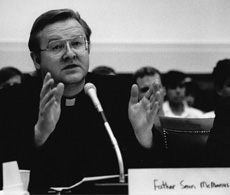Sinn Féin is Destined FOR A Dramatic Dáil Advance When The Next Election Comes
Posted By: June 14, 2014
Noel Whelan. Friday, June 13, 2014. I have been wrong about Sinn Féin in the past. I have tended to be premature in predicting its electoral rise. Just over a decade ago, when Sinn Féin had five TDs and its leaders enjoyed heightened celebrity at the centre of the Northern Ireland peace process, I speculated about an outside possibility that Sinn Féin could win up to 20 seats at the following general election. When that election came in 2007, Sinn Féin’s seats actually fell from five to four, with Seán Crowe in Tallaght losing his seat. Setbacks in the peace process, delays in decommissioning, the IRA’s association with the Northern Bank robbery and the murder of Robert McCartney, cumulatively served to contain Sinn Féin’s growth in the Republic. Bertie Ahern’s then popularity, particularly in working-class Dublin, and his subtle but significant incursions into Sinn Féin’s republican turf – for example by re-establishing the national 1916 commemoration for the 90th anniversary in 2006 – also cut off some of Sinn Féin’s room for advancement. More recently it was surprising that Sinn Féin did not get an immediate electoral bounce out of the economic downturn. One would have presumed that rising unemployment and the collapse of Fianna Fáil from 2008 onwards would have generated rapid growth for Sinn Féin but this did not happen. The first election of the recession was the 2009 local elections in which Sinn Féin got almost exactly the same vote as it got in 2004 and Mary Lou McDonald lost her European Parliament seat. Mediocre Even the advance of Sinn Féin in the 2011 Dáil election was mediocre. It won nine extra seats. Of itself that seems impressive, but not when one considers that on the same day Fianna Fáil lost 51 seats, Labour won 17 seats and Fine Gael gained 25. Sinn Féin fed very little off the Fianna Fáil carcass: Fianna Fáil’s vote fell by 17 per cent and Fine Gael and Labour each grew their vote by 9 per cent, but Sinn Féin’s vote rose by just 3 per cent. The party’s performance in the 2011 presidential election also failed to live up to expectations. In Martin McGuinness, they selected one of the most high-profile politicians on the island, but in a contest in which Fianna Fáil couldn’t even field a candidate, and the Fine Gael candidate tanked, McGuinness managed only 14 per cent. It seemed there was a “legacy of the Troubles” ceiling on the Sinn Féin potential for growth in the Republic. That has now all changed. Sinn Féin is clearly on a surge and is destined for a very dramatic Dáil advance whenever the next election comes. I wrote here six months ago that Sinn Féin was set for spectacular gains and would at least double its county and city councillors. It polled 15.2 per cent and trebled its seat numbers. Anyone seeking to excavate the Sinn Féin advance in last month’s election and assess its implications for the next Dáil election would do well to start in Dublin South West. Labour dominated this constituency in 2011. Pat Rabbitte topped the poll with 1½ quotas and he and Eamonn Walsh won two of the four seats for Labour. Sinn Féin’s Seán Crowe and Fine Gael’s Brian Hayes picked up the other two. Fianna Fáil, which dominated here in 2007, lost both its seats. Tight grip Now, however, Sinn Féin has a tight grip on the politics of Tallaght. In the Tallaght South local electoral area, Sinn Féin got 50 per cent of the first preference vote, won two seats and would have won another if it had sufficient candidates. The Anti-Austerity Alliance, People Before Profit, Labour and an Independent won the other four seats. In the Tallaght Central local electoral area Sinn Féin took two of the six seats with more than 32 per cent of the vote, the Anti- Austerity Alliance took another two seats, while Fianna Fáil’s Charlie O’Connor and Labour’s Mick Duff took one each. This massive Sinn Féin vote, and indeed the massive “anti-establishment” vote generally, is tempered in the Dublin South West constituency by the more middle- class make-up of the Templeogue-Terenure local electoral area. Even there, however, Sinn Féin got a seat and 12 per cent of the vote (and Independents got 30 per cent). It all means that, notwithstanding the redrawing of part of the current Dublin South into this constituency, Sinn Féin is well set to win two seats at the next general election when Dublin South West is a five-seater. Indeed Sinn Féin will not have to wait until the next general election to have two TDs in Dublin South West. Paddy Power has installed Sinn Féin at 1/6 as the party most likely to win the autumn byelection to fill the Brian Hayes vacancy. Volatility Although these are amazingly bad odds, they appear correct in light of the local election outcomes. Given the ongoing social and economic volatility that currently underlies Irish politics, it is unwise to make even short-term predictions. It seems certain, however, that Sinn Féin is now on a surge in the Republic and not only in its original bases such as urban working-class areas and the Border counties. © 2014 irishtimes.com










